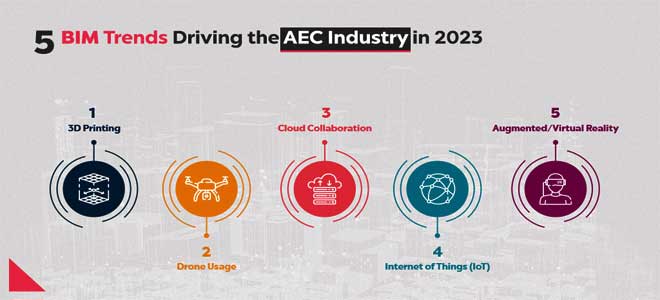BIM, or Building Information Modeling, is a methodology for creating, managing and sharing information about built assets through multidisciplinary collaboration and coordination. By allowing collaboration inside a single project file, it makes sure that every project stakeholder is updated with the correct and most recent information. The project's lifeblood is the data included in a BIM model.
Models with BIM include more than three-dimensional graphics; they include cost, time, and sustainability data as well. They serve as a bridging platform between highly fragmented AEC disciplines thanks to the density of data they contain. BIM has eliminated delays, reworks, and budget overruns caused by miscommunication and data loss.
What do you mean by Computational Design?
Computing technology is used in computational design, where logical processes are applied to data. Computational design has changed the way architects produce designs, no matter how complex they may be.
In contrast to CAD, computational workflows are used by architects during the design development process rather than only for the visual display of design concepts. The whole design process has been significantly enhanced, becoming more effective, sustainable, and user-centric thanks to computation-powered algorithms and parameters.
The two most cutting-edge and popular design approaches, computational design and BIM, have come together to form computational BIM. Its foundation is computing, including algorithms, generative capabilities, and BIM-based data management principles. Computational BIM processes enable the administration and manipulation of geometric and information included in BIM models at their most basic level.
Using computational BIM to automate workflows
A complementary relationship exists between computational design and building information modelling. Computer algorithms enable repetitive tasks to be automated, allowing architects to focus on the actual design.
Whenever the model is updated, all the related metadata in the model will also be modified as well. There is no doubt that it is a 3D BIM model after all. It should be noted that drawings and schedules affected by the change do not need to be manually updated as a result.
Sustainability and its correlation with Computational BIM
Sustainable design processes can be supported by both computational design and BIM workflows. Combined, they make a great sustainable design foundation. By combining both approaches, designers can make more efficient and time-consuming design decisions.
Traditionally, there is not much time for analysis and simulation processes to be carried out during the design and construction processes. Despite this, as the goals to achieve for sustainability become more and more ambitious, building simulations and analyses become an increasingly necessary part of the process. In the days of computational design tools, architects are able to run a number of simulations in order to be able to make data-driven decisions. BIM tools are capable of doing the same, as well as a lot more.
There have been considerable savings in both time and resources due to the coordination between each stakeholder of the project, which indirectly contributes to a more sustainable project. In the AEC industry, it is now imperative to use computational workflows for BIM to design sustainable buildings as a means of combating climate change.
Workflow tools for computational BIM
Computational BIM workflows can be facilitated by multiple BIM tools and visual programming tools. The following is a list of some of the most common and basic computational BIM software.
Revit 3D + Grasshopper
BIM software is not supported by Rhinoceros 3D or Grasshopper. Modelling tools such as Rhino 3D and Grasshopper provide visual scripting capabilities similar to Dynamo. A BIM intelligent model can be created using additional plug-ins, such as VisualARQ.
Revit + Dynamo
A popular BIM software for architects and engineers is Autodesk Revit. It is possible to improve productivity across all workflow stages, from conceptual design to operations and maintenance.
The preferred Revit plugin for streamlining computational operations has always been Dynamo. For the purpose of incorporating computational design skills into design workflows, it is a graphical or visual programming interface.
Create a building using parametric, algorithmic, and generative design approaches, then share it with other stakeholders or start documentation with all the data integrated, all in Autodesk Revit.
Rhino.Inside.Revit
Rhino.Inside. Revit is a plugin that seamlessly integrates sophisticated modelling into Revit using the Rhino 3D interface. It also incorporates Grasshopper to enhance computational design workflows even further. Create a complicated free-form organic shape in Grasshopper and quickly convert it to a BIM model in Revit.
What can Computational BIM Professionals Do?
Having skills in the field of Computational BIM can be very beneficial for anyone in the AEC industry. It is possible to work in more conventional BIM roles or to specialize completely in computational BIM. The design technology specialist is a less common option. They are skilled in various design technologies and can assist the design team by implementing interoperability processes.
You can also create custom BIM tools for internal use if you are more interested in the programming portion of Computational BIM. It is common for large architectural firms to have internal teams that develop customized workflows and tools. The AEC industry is opening up new career opportunities with the introduction of Computational BIM.

